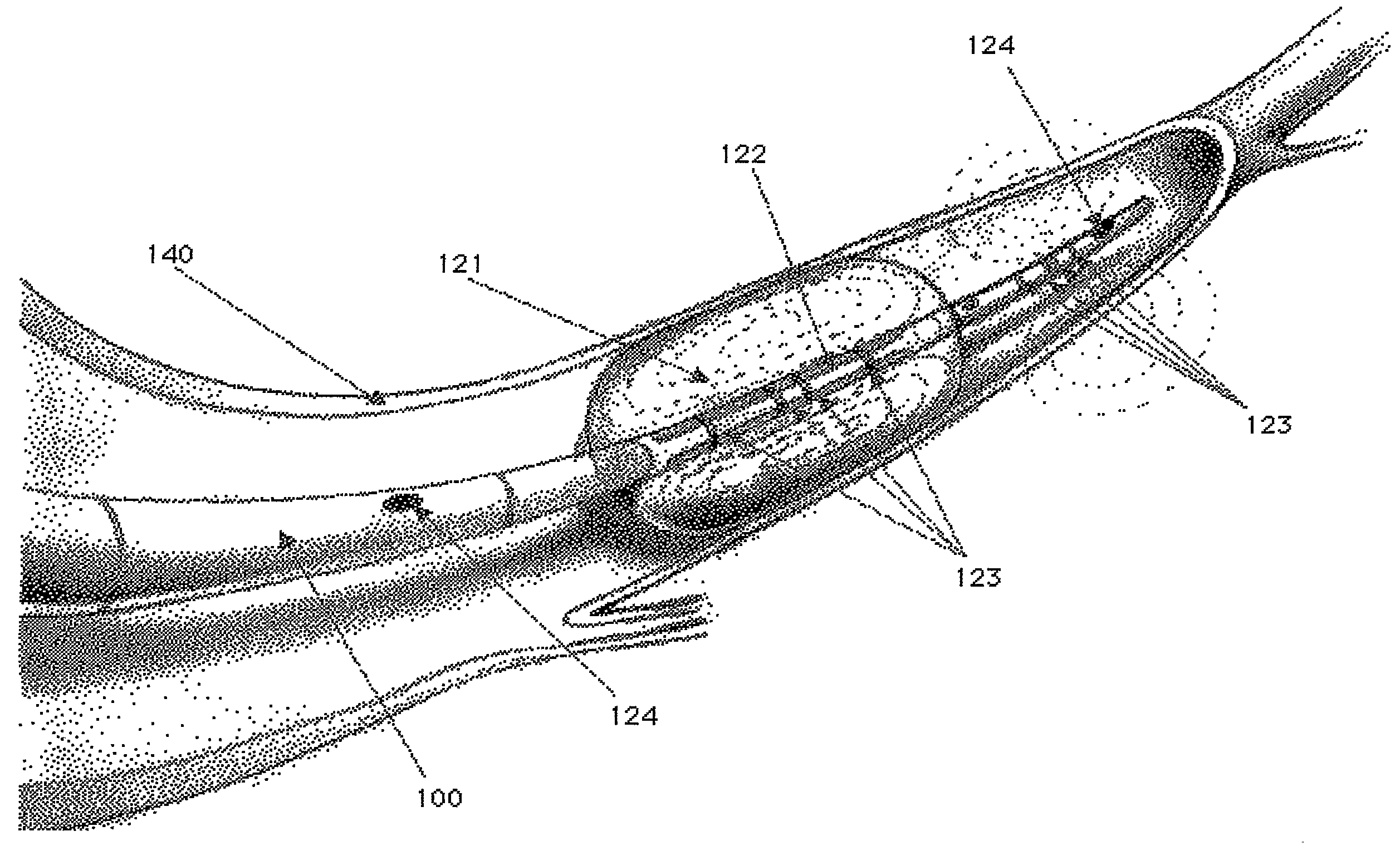Device and Methods for Controlling Blood Perfusion Pressure Using a Retrograde Cannula
- Summary
- Abstract
- Description
- Claims
- Application Information
AI Technical Summary
Benefits of technology
Problems solved by technology
Method used
Image
Examples
Embodiment Construction
[0024]The present invention describes a cannula for acute and chronic retroperfusion that is designed for percutaneous insertion into the coronary sinus and proximally connecting to the subclavian artery. This allows retroperfusion of oxygenated blood through the coronary venous system to decrease an acute ischemic area during an acute myocardial infarction event.
[0025]An exemplary embodiment of the invention, illustrated in FIG. 1, shows a cannula 100 within a vessel wall 140, with the proximal portion (not shown) being a graft. The distal portion of the cannula includes a catheter 101 with an expandable external balloon 121. The catheter may be made of any appropriate material used in the art, such as polyurethane, silicone rubber, or other appropriate polymeric material. The distal end may also contain pressure sensors 124 for monitoring purposes and impedance electrodes 123 for measuring the vessel and sizing the external balloon 121 accordingly.
[0026]The external expandable bal...
PUM
| Property | Measurement | Unit |
|---|---|---|
| Pressure | aaaaa | aaaaa |
| Area | aaaaa | aaaaa |
| Bioabsorbable | aaaaa | aaaaa |
Abstract
Description
Claims
Application Information
 Login to View More
Login to View More - R&D
- Intellectual Property
- Life Sciences
- Materials
- Tech Scout
- Unparalleled Data Quality
- Higher Quality Content
- 60% Fewer Hallucinations
Browse by: Latest US Patents, China's latest patents, Technical Efficacy Thesaurus, Application Domain, Technology Topic, Popular Technical Reports.
© 2025 PatSnap. All rights reserved.Legal|Privacy policy|Modern Slavery Act Transparency Statement|Sitemap|About US| Contact US: help@patsnap.com



